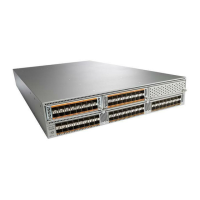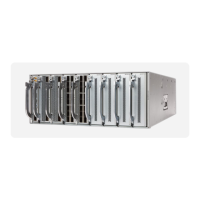Enabling CFS for an Application
All CFS-based applications provide an option to enable or disable the distribution capabilities.
Applications have the distribution enabled by default.
The application configuration is not distributed by CFS unless distribution is explicitly enabled for that
application.
Verifying Application Registration Status
The show cfs application command displays the applications that are currently registered with CFS. The first
column displays the application name. The second column indicates whether the application is enabled or
disabled for distribution (enabled or disabled). The last column indicates the scope of distribution for the
application (logical, physical, or both).
The show cfs application command only displays applications registered with CFS. Conditional services
that use CFS do not appear in the output unless these services are running.
Note
switch# show cfs application
----------------------------------------------
Application Enabled Scope
----------------------------------------------
ntp No Physical-all
fscm Yes Physical-fc
rscn No Logical
fctimer No Physical-fc
syslogd No Physical-all
callhome No Physical-all
fcdomain Yes Logical
device-alias Yes Physical-fc
Total number of entries = 8
The show cfs application name command displays the details for a particular application. It displays the
enabled/disabled state, timeout as registered with CFS, merge capability (if it has registered with CFS for
merge support), and the distribution scope.
switch# show cfs application name fscm
Enabled : Yes
Timeout : 100s
Merge Capable : No
Scope : Physical-fc
Locking the Network
When you configure (first-time configuration) a feature (application) that uses the CFS infrastructure, that
feature starts a CFS session and locks the network. When a network is locked, the switch software allows
configuration changes to this feature only from the switch that holds the lock. If you make configuration
changes to the feature from another switch, the switch issues a message to inform the user about the locked
status. The configuration changes are held in a pending database by that application.
Cisco Nexus 5600 Series NX-OS System Management Configuration Guide, Release 7.x
OL-31641-01 41
Using Cisco Fabric Services
Enabling CFS for an Application

